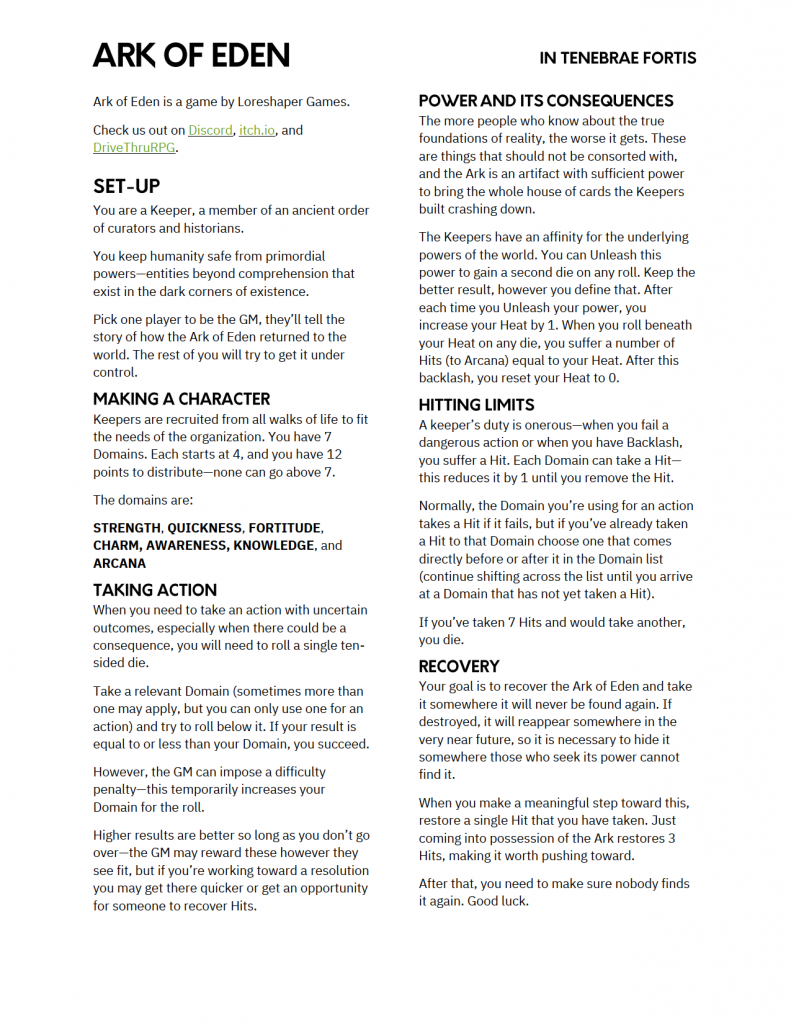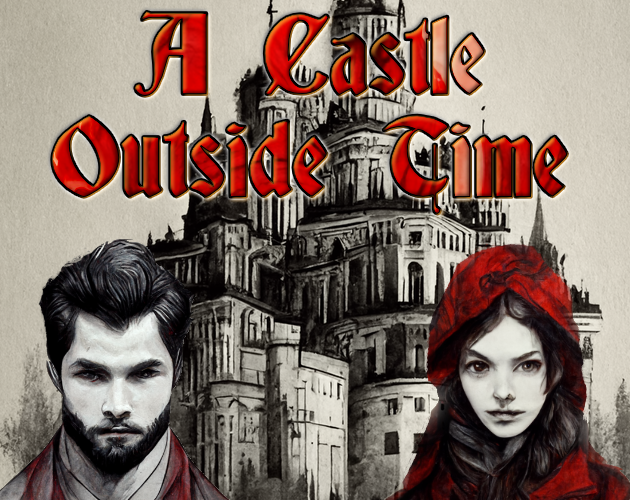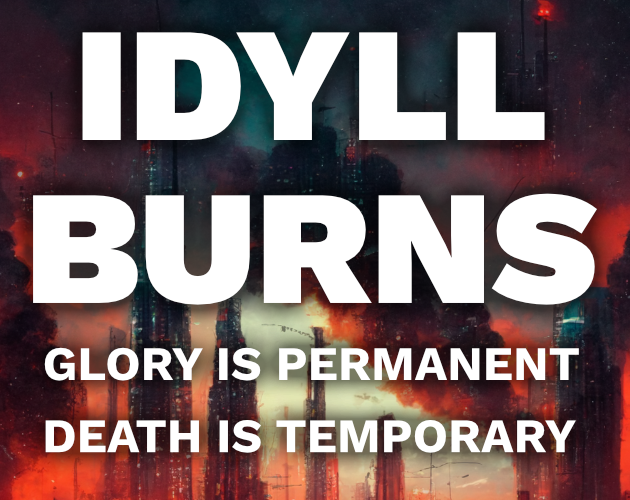What I’ve Learned from Writing a Game Every Day
I’m not a stranger to writing a game every day. Back in May, I did one game per day (and an extra), but not on a perfect daily schedule.
Anyone who wants to be creative should think about the effects of repetition. There’s some danger there, but it’s also how you grow. Especially if you’re willing to be harsh enough to confront failings, it provides a lot of opportunity.
A while back, I wrote about my experiences in May (you can find that post here), where I wound up writing 32 games over the course of the month and how that went, but that was more focused on the practical side of things.
Today I’m going to talk about some changes and what I’ve been doing differently as I’ve returned to making a game a day alongside my other work.
Scope, Scale, and You
The first thing to understand about writing a game every day is that it can eat your life pretty seriously. For May I made my mission a complete game every day, and the overall length varied from business cards to more than a dozen pages in length.
This gave a lot of freedom, but it also ate almost everything from my work budget. My daily games tend to be Itch exclusives (for a variety of reasons; I’ve ported some to DriveThruRPG but not all of them). If you look at Loreshaper Games’ analytics over the past years, I quadrupled my total views over the course of May.
Between my daily games and a couple asset packs (The Font Collection and The Paper Project), I’ve been getting even more traffic over the last couple weeks. I promote stuff around in a few places, such as game jams and their associated Discord servers, but really, I mostly just release and see how it goes.
I’ve been working on these new games as one page or one-plus-one page games (Helion, Our Domain is an example of this, clocking in at four pages with a front and rear cover as well as one page of rules and one page of rules for GM-less play).
Constrained and Unconstrained
For May, I didn’t have constraints, while for this current binge of daily games I’ve been following a fairly strict rule about the length: no more than one page, two pages in a pinch.
Setting a limit means that I’m being fairly careful about what I do and it also means that my maximum length, theoretically, is about 1800 words (and that requires some shenanigans with layout and typesetting). That’s a lot to write in a day for most people, but I average around 3000 words a day when I write, so that works out to just over half of a day’s writing in an extreme case.
In practice, doing the one-page format typically gives me between 500 and 600 words per page unless I play some magic with narrow margins and questionable fonts.
On one hand, this means that my games are a lot shorter, but there are two advantages to this.
The first is that I’m able to keep working on projects. Carrion Birds is on the backburner for now until I can get my next project out, and I make 1000-2000 words of progress on an average day since I’ve gotten the core mechanics done and I’m working on setting content and game content for the free and paid versions of that.
The second is that you wind up with more of a need to mess around with limited stuff, giving you more room to explore without reinventing the wheel.
For instance, Helion, our Home, the first part in the Helion triptych (Helion, Our Domain is the second), is a one-page variant of Around the Water-Wheel, which I made as my first daily game in May. That required some changes and adaptations, but also forced me to draw back to the essence of what it did.
Limitations and Methods
One important distinction between this attempt at daily games and the one in May is that I’ve streamlined my workflow. I’ve moved to doing the majority of my games in Word and just exporting from there directly, doing any extra work in Affinity Publisher by insetting the PDF over a page template. This lets me work in my word processor and get relatively decent results, then transition over to Publisher to work with images or elements that don’t work well in Word.
The advantage of this is that the start-to-finish of the project goes down by the five or ten minutes it takes to do the layout in Publisher for a few of the projects.
You also just get faster as workflow goes on. I’ve tried to hit a point where I can do stuff fairly quickly and still look like I’ve put effort in but not have a lot of overhead.
Cheating is Good
Unlike in academia, once you’re an independent creative you want to cheat as much as you can. The lion’s share of my games are based on another game, often streamlined or tweaked to do something different. A lot of the very simple games wind up looking like each other by necessity.
The secret is to recycle everything you can and only iterate on what you don’t need. Layout, format, fonts, and the like are all significant questions that go into a finished product when you’re not on a timeframe. When you’re going quickly, use very simple heuristics: Word’s two-column setup for portrait formats, three-column for landscape, pick something other than the default color palette and style-set.

When you’re writing a game every day, simplicity is golden, and working in Word instead of having to shunt things over means that I don’t have to worry about things like hyperlinks and font selections getting messed up in the transition.
Get Help
I do most of my work on games as a solo project, both because of the complications added by working as part of a team and the speed I work at, which is quite fast compared to most people in the industry.
However, you can’t always do everything alone. I’ve got some graphic design and writing skills, and I’ve got old game design stuff from when I was probably ten or eleven (it’s not good, but it shows that I’ve wanted to do this forever and I thought about it seriously, if ineptly).
The secret here is to learn what you’re not good at and figure it out from people that do. Pixabay and Pexels are great sources of stock photography, with Pixabay also offering stock vector designs, which are great for anyone who needs something easily tweaked or inserted into a document in ways photos often resist.
I use Midjourney, which does AI-generated images with a heavily artistic bent as my primary source for visuals now, but there’s a lot of stuff that you can get if you know where to look.
Go for stuff that bridges the gap between what you can do easily and can’t do easily. I can pretty easily (if not always perfectly) compose a scene using artistic elements. Colors, text, and simple tricks make up the difference, and don’t require drawing skill.



When you find something you can use, label it so you know what you can use it for, where it’s from, and what licensing terms apply, and then file it away. Midjourney gives me a competitive edge since it basically generates bespoke art if you know what to ask it for, and a few minutes of polish after the fact makes things look great.
Setting a Schedule
Writing a game every day requires some discipline, if only to make sure it gets done before the clock hits midnight.
My formal training is in creative writing, and I’ve never been one of those write on demand people. I can set a clock and write a little when it rings, but that’s not sustainable.
Instead, you need to think in terms of when you can get in the writing mode.
Since I’ve been working on games full-time, writing a game every day means making sure that I’ve hit that mode at least twice during a day to be safe.
I aim for four writing sessions a day.
Figure out what conditions make writing right.
For me, that’s caffeine, contemplation, and context.
Resource Management
I find I write easily immediately after satisfying my caffeine “habit.” Since I’ve cut my consumption down to a morning drink and an early afternoon drink, I plan around that.
Any chores, communication, or other stuff gets done before or long after the caffeine. Hard focused work goes immediately after. Yesterday I spent a couple hours working on a map, then did some other work in the afternoon.
Contemplation is another thing. I tend to be a night owl, writing in prolonged sessions later in the day. Since ideas have had some time to rumble around, they spill out easily onto the page. Before I go to bed, I leave some notes or an image for the next day. That sets me off on the right foot.
Context is also important. I find something to inspire me, such as a podcast or a video game I’m vibing with, and slot it into my free time right before a writing session.
One out of three works in a pinch, but getting all three in one go is the key to flow.
Don’t Accept Failure
The simple way to do something all the time is to never fail.
That’s unhelpful, but it’s also true.
Fortunately, there are some universal tips that should work for almost everyone:
Start Early
You can set up yourself for failure a number of ways. Procrastinate until the end of the day? Well, if you’re willing to accept the technicality of a waking day and work past midnight, you might still pull it off.
But it’s better to plan around this. Figure out habits and use them to your advantage.
Start early in the day. At least get a few bits down. That way you’ll just be finishing the project rather than starting it.
That also helps give you multiple writing sessions across the day, which is nice if you’re ambitious. It’s also an antidote to cramming and having unnecessary errors.
When I was teaching, I’d write 250-300 words before leaving for a day of work. Then I’d get back and write another 1000-1200 on a good day, but even if I only got another ~200 in I’d still be 500 words ahead of where I started.
Construct an Environment
If you know what factors help you write, create them. It’s easier than forcing the writing.
This could mean getting rid of distractions, but I don’t. Obviously that’s a simplification: I don’t tempt myself more than I should. But it’s easier to build flow than to set an arbitrary barrier.
If I deny myself stuff, I want it. If I create the conditions to work, I want to work. This is because I’m focused on the work.
Writing a game every day means having that writing environment every single day. If you don’t know what environment is conducive to your writing, figure it out.
Habits Compound
If I’d started writing a game a day at the start of this year, I’d probably have managed a week before folding. In May, I almost got one done every day, but had gaps.
This most recent run has been going for the last two weeks with no interruption and without seriously hitting my other work.
That’s because every time you do something it gets easier. This is partly experience speaking. I’ve also been very growth-minded by looking for tools and resources to help, like SRDs and other games (Breathless being my go-to) that I can adapt to fit my needs.
Build skills, build a war chest, build the understanding of your ideal environment, and you set those habits in motion.
Rest
My average daily output hovers around 3000 words. This may sound like a lot, but it’s really not a consistent level. Sometimes I’m working on editing or something like that and it drops my word-count. But there’s another factor here.
I don’t sweat every day. Sure, I put in the effort to make a game. But that game can be small. It can be moody. It can retread old ground and put a small twist on it. In short, it can be fun.
Then, if my final total count is 800 words, I’ve gotten something done. And I don’t feel guilty about it. Knowing your limits and taking a break is good. Just don’t let it become an unscheduled vacation.
I can rest while doing a daily game because it’s my output level. If you’re new, you might want to think about that. In May, I’d do a business card game on days I needed a recharge.
Think of it this way: when you are very productive, you can afford to slow down and play. Work hard, then work playfully. Don’t insist on only struggling.
Fail Happily
If there’s something that goes wrong, go one of two ways immediately:
Scrap it, and move on to a new idea. You can keep the old stuff, of course. Just set it aside. Maybe you’ll have a moment of revelation and return to it later.
Salvage it, even if it means major changes. When you’re working on a daily game, the amount you need to change is going to be small. Often I’ll start working on a game idea and figure out that it doesn’t work, so I’ll pivot and use a new system. In a daily game, especially a one-page game, that means changing a few paragraphs of rules, if you’re clever.
Don’t let these get you down. Scrapping or salvaging means forward progress. You’ve made forward progress, so you should feel happy.
This prevents burnout, because you’re not navel-gazing over issues. From the past fourteen days, I’ve got three folders dedicated to games I didn’t wind up making. I might go back and make them! There’s no rule saying I can’t.
But there’s one thing I don’t let myself do about them: I don’t worry about them.
Writing a game every day means that the cost here is low. Take advantage of that.
Conclusion
From writing a game every day, I’ve learned a few things.
The exercise is a fantastic way to push yourself toward simplicity and lateral approaches to existing stuff. For instance, I spun Breathless’s traditional RPG style into a GM-optional storytelling game where players manage a colony on an alien world. A Castle Outside Time draws on Castlevania and Dark Souls with a one-page d6 system.
The skills you pick up to streamline and simplify your workflow when you think about how you can do arduous things quickly are important. I was working for a client and he wanted a little corner of a page illustration. Midjourney gave me an image, which I cut out of its background and made some minor adjustments to, tossed into Inkscape for a quick tracing, and then slapped onto the page.
Normally, that would have been impossible in late stages of production, but it took fifteen minutes from start to finish.
Likewise, it’s been a source of tricks for Oasis Roads, my upcoming game. I feel more confident that I can support its development without having an ugly, plain document to avoid layout breakage issues.
And, ultimately, it’s drawn a lot of traffic to my storefront, which is a great thing for anyone who wants to make a name for themselves.
Leave a Reply